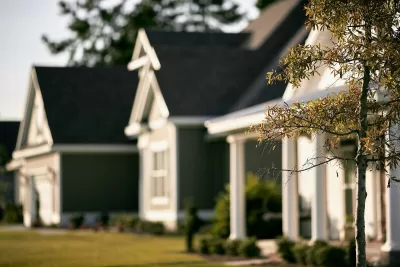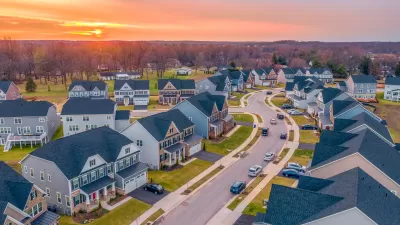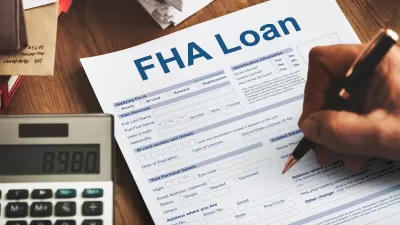Owning a home has long been considered the ultimate aspiration. But social and economic realities mean the stories about and the path to homeownership are not simple and straightforward.

In a feature piece, Katy Kelleher looks at the concept of homeownership as part of the American dream and the disconnects between aspirations and reality. She starts by describing various films where the perfect home ends up terrorizing its occupants, a reflection of our tenuous relationship with the idea of homeownership and the burdens it brings:
There are two different tales we tell ourselves about houses. The primary story is not about ghosts or demons or red rooms or ghouls, but rather about bright futures, long lives, children, grandchildren, and hard-earned success. The second story, the darker story, is about the horror of being trapped.
Homeownership was not always an integral part of American culture, she notes. Instead, the narrative shifted in the post-World War II era, when opposition to public housing was on the rise and the suburbs were expanding rapidly. "Suburbia has always been good for industry. Big houses required big appliances and used lots of carbon, creating a ‘hydrocarbon middle-class family’ that was buoyed by three industries: coal, steel, and automaking," says Kelleher.
For Americans today, particularly millennials, owning a home is harder and even out of reach for many. And homeownership is not fulfilling the needs, perceived or actual, that it had in the past. "Perhaps the real American dream is to find a sense of stability, safety, and acceptance. Maybe this is a downsized version of our parents’ American dream, or perhaps it’s just more honest, taking into account all the different stories we’re fed from the outside, and all the private stories we tell ourselves behind closed doors," adds Kelleher.
FULL STORY: THE HOMEOWNERSHIP OBSESSION

Study: Maui’s Plan to Convert Vacation Rentals to Long-Term Housing Could Cause Nearly $1 Billion Economic Loss
The plan would reduce visitor accommodation by 25,% resulting in 1,900 jobs lost.

North Texas Transit Leaders Tout Benefits of TOD for Growing Region
At a summit focused on transit-oriented development, policymakers discussed how North Texas’ expanded light rail system can serve as a tool for economic growth.

Why Should We Subsidize Public Transportation?
Many public transit agencies face financial stress due to rising costs, declining fare revenue, and declining subsidies. Transit advocates must provide a strong business case for increasing public transit funding.

How to Make US Trains Faster
Changes to boarding platforms and a switch to electric trains could improve U.S. passenger rail service without the added cost of high-speed rail.

Columbia’s Revitalized ‘Loop’ Is a Hub for Local Entrepreneurs
A focus on small businesses is helping a commercial corridor in Columbia, Missouri thrive.

Invasive Insect Threatens Minnesota’s Ash Forests
The Emerald Ash Borer is a rapidly spreading invasive pest threatening Minnesota’s ash trees, and homeowners are encouraged to plant diverse replacement species, avoid moving ash firewood, and monitor for signs of infestation.
Urban Design for Planners 1: Software Tools
This six-course series explores essential urban design concepts using open source software and equips planners with the tools they need to participate fully in the urban design process.
Planning for Universal Design
Learn the tools for implementing Universal Design in planning regulations.
City of Santa Clarita
Ascent Environmental
Institute for Housing and Urban Development Studies (IHS)
City of Grandview
Harvard GSD Executive Education
Toledo-Lucas County Plan Commissions
Salt Lake City
NYU Wagner Graduate School of Public Service





























